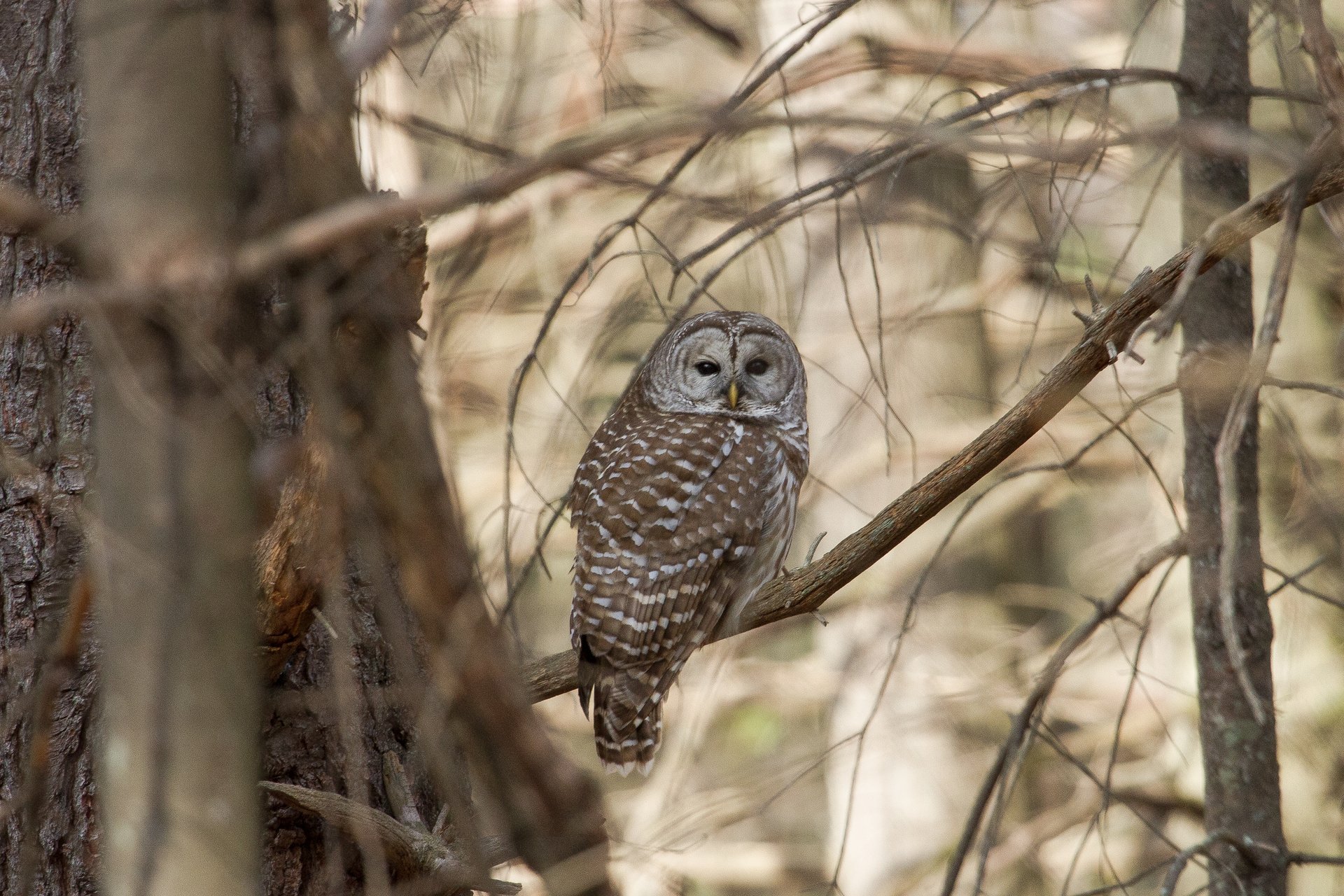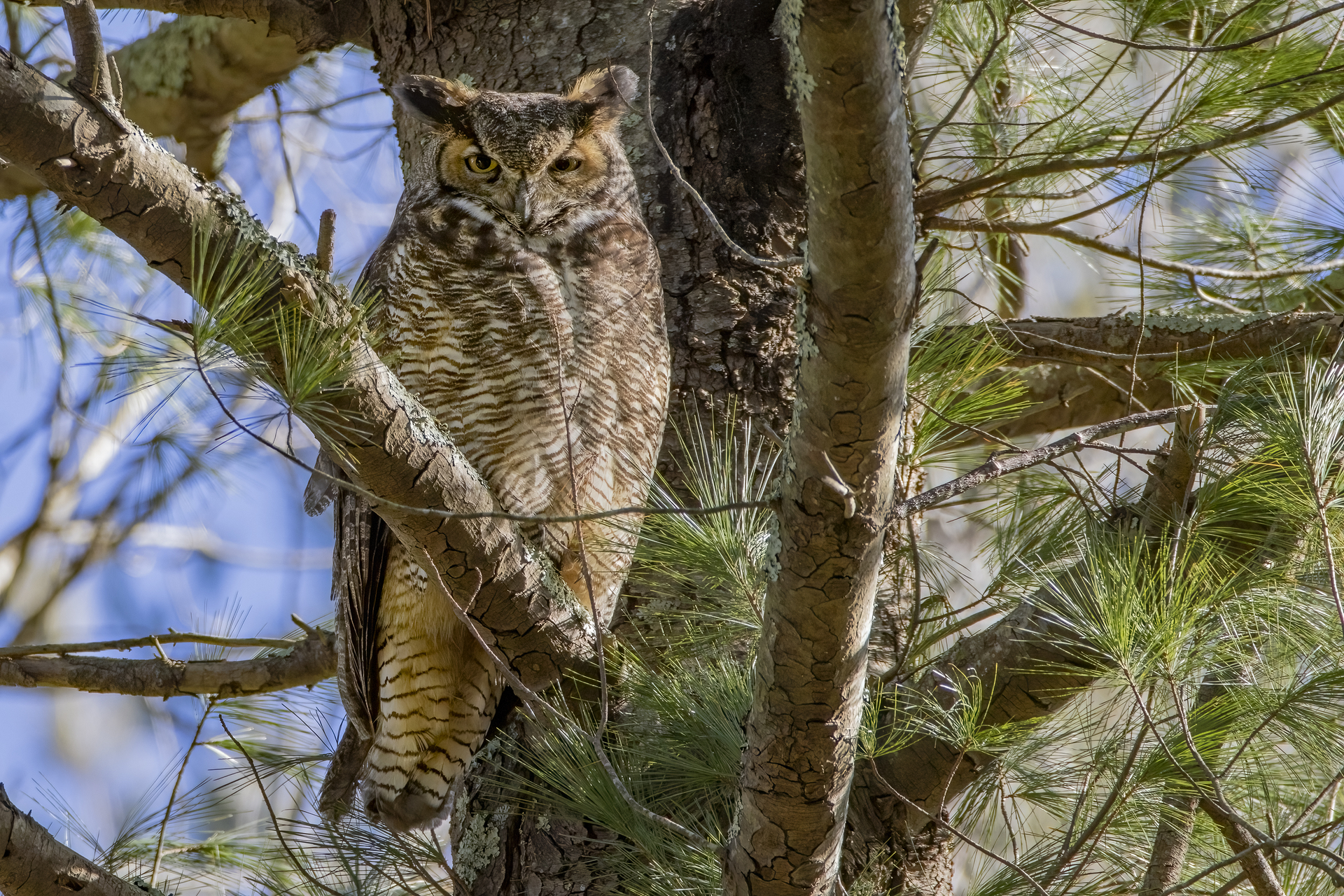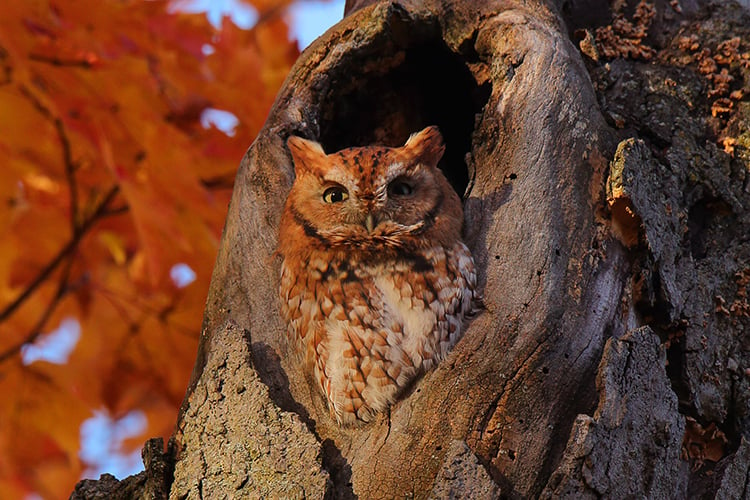You may be surprised to learn that owls can be heard in most neighborhoods and backyards, even in Boston and the nearby suburbs.
Since many owl species begin looking for mates in winter and are at their most vocal this time of year, now is the perfect time to go “owling”—looking and listening for owls—either at a wildlife sanctuary or even in your own backyard!
The Secret Is…
…That there is no great secret to owling! The best thing to do, though, is to listen and study calls in advance. There are only a handful of species in Massachusetts in winter, so it is an easy group of birds to learn and listen for. Learn more about the eight owl species commonly found in Massachusetts and listen to recordings of their calls to familiarize yourself with the different calls.
Once you’ve got a few calls down pat, just go outside and start listening! Steer clear of windy nights because it can be hard to hear, and it’s best to avoid using a flashlight unless you need to since they can scare off the owls. For this reason, nights with bright moonlight are perfect for owling.
What to Listen and Look for to Find Owls
This time of year, you’ll hear Great Horned Owls, found throughout most of the state, calling around dusk. If they duet (two owls calling to one another), they are likely courting. You can tell male from female by the pitch: the females tend to “hoo, hoo” at a higher pitch than the baritone males.
Screech owls will nest in Boston backyards and use nestboxes readily (of course, so do squirrels!). Ounce for ounce, they are among the toughest owls around. Barred Owls, found in most of Massachusetts other than the southeast, will call during the day with their famous refrain of “Who cooks for you?”
Of course, Snowy Owls are in a category by themselves; these large owls breed in the Arctic, but can often be seen during their migrations in spring and fall.
Once you start to hear owls regularly in the same place, you can look for nests and later for owl “pellets”—regurgitated bones, fur, and feathers from their most recent meal—and eventually downy chicks. If you manage to spot one, you can report the sighting using an online sighting tool. These reports provide valuable information about the owl population in the state.
Upcoming Owl Programs
See MoreOwl Prowl
-
Long Pasture Wildlife Sanctuary, Cummaquid
-
Saturday, January 3
3:30-5:00pm
Adults & Families - 10 - 17
Owl Prowl
-
North River Wildlife Sanctuary, Marshfield
-
Friday, January 9
3:30-5:30pm
Adults
Owl Prowl
-
Wellfleet Bay Wildlife Sanctuary, South Wellfleet
-
Friday, January 9
4:00-5:30pm
Adults & Families - 10 - 17
Owl Prowl
-
Long Pasture Wildlife Sanctuary, Cummaquid
-
Friday, January 16
4:00-5:30pm
Adults & Families - 10 - 17
Family Owl Prowl
-
Daniel Webster Wildlife Sanctuary, Marshfield
-
Friday, January 16
4:00-5:30pm
Families - children 6 - 17
Chili and Cornbread Owl Prowl
-
North River Wildlife Sanctuary, Marshfield
-
Friday, January 16
6:00-8:00pm
Adults
Stay Connected
Don't miss a beat on all the ways you can get outdoors, celebrate nature, and get involved.





